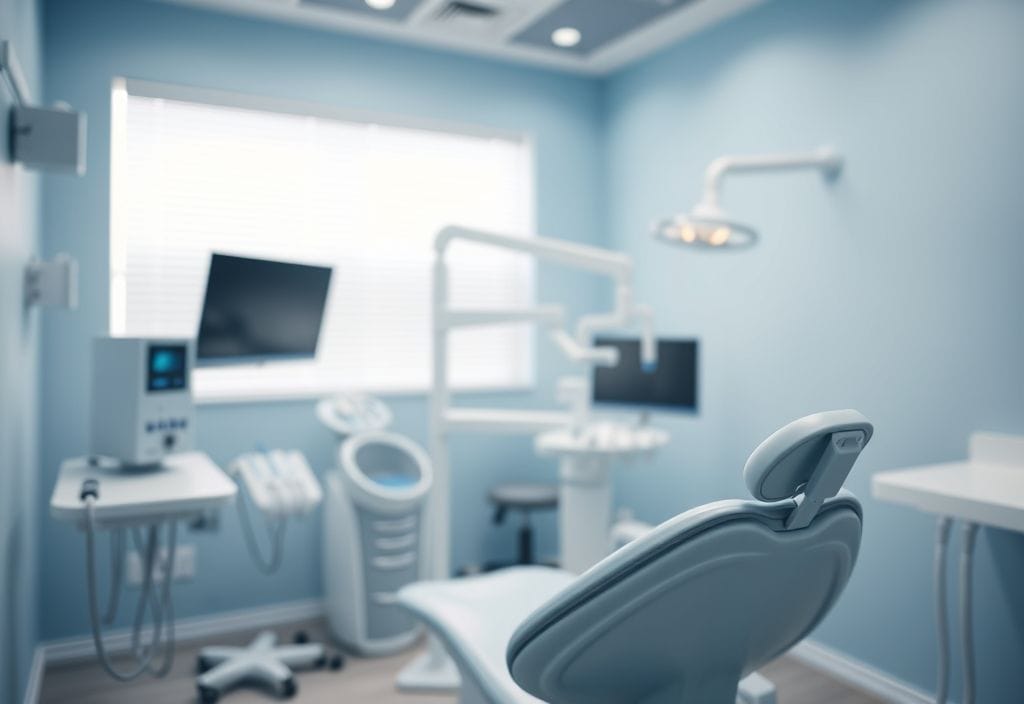If you’re wondering how many carbon monoxide detectors do I need, the simple rule is at least one on every level of your home and outside every sleeping area. Larger homes may require additional units near fuel-burning appliances and attached garages for safety. Carbon monoxide is invisible and odorless, so proper coverage is essential. This guide will walk you through expert advice, practical examples, and safety tips to protect your household.
1. How Many Carbon Monoxide Detectors Do You Need in One House
Every home is different, but the core principle remains: you need enough carbon monoxide detectors to cover all sleeping areas and every level of your House. This ensures early detection, no matter where the gas builds up. Think of detectors as silent guardians working together to create a complete safety shield.
Best Practices for How Many Carbon Monoxide Alarms Do I Need
The exact number depends on the size and layout of your home. Larger homes with multiple floors and bedrooms require more detectors to ensure complete coverage, while smaller apartments may need fewer.
Placement Numbers Based on Home Size and Design
| Home Type | Minimum Detectors | Recommended Coverage | Extra Safety Tip |
|---|---|---|---|
| Small Apartment | 1–2 | One per level | Place near bedroom area |
| Medium House | 3–4 | Each floor + bedrooms | Add near kitchen |
| Large House | 5–6 | Every floor + zones | Include garage entry |
| Multi-Floor Home | 4–6 | Bedrooms + basement | Hallways need coverage |
| Rental Property | 2–3 | By code requirement | Add in living space |
| Vacation Home | 2–4 | Seasonal placement | Check batteries yearly |
Essential Carbon Monoxide Detector Placement for Families
- Bedrooms: Always install one outside sleeping rooms so alarms can be heard at night.
- Floors: Each level of the home, including the basement, should have at least one detector.
- Kitchens: Place near but not directly inside kitchens to avoid false alarms.
- Garages: Install near entry points if you have an attached garage.
- Living Areas: Large open spaces may need additional coverage for complete safety.
Carbon Monoxide Detectors: How Many Do I Need for Safety
Most safety experts recommend placing one detector outside each sleeping area, one on every floor, and one near fuel-burning appliances. This layered approach makes sure your family is protected at all times.
How to Maintain Your Carbon Monoxide Detectors
- Always test detectors monthly to confirm they work.
- Replace units every 5–7 years for reliability.
- Keep batteries fresh and change them yearly.
- Place detectors at eye level for easy visibility.
- Never block them with furniture or décor.
2. How Many Carbon Monoxide Detectors Should Be in a Home

Every household should have more than just the bare minimum detectors. Experts agree that you should place units not only on every floor but also in hallways and areas close to fuel-burning appliances. This layered placement gives your family the strongest protection.
Why Experts Recommend Multiple Detectors
One device alone cannot guarantee full coverage. Gas can collect in different rooms, so spreading detectors throughout your home ensures quicker detection and more peace of mind.
How Many Carbon Monoxide Alarms Do I Need for Bedrooms and Living Areas
Sleeping areas and living spaces are high-priority zones. Bedrooms need alarms nearby so occupants wake up immediately if levels rise, while living rooms often share air with kitchens and fireplaces.
Avoid These Detector Mistakes for Better Home Safety
- Ignoring Floors: Skipping detectors in basements or upper stories creates blind spots.
- Wrong Placement: Installing near windows or fans can affect accuracy.
- Old Devices: Many forget that detectors expire after 5–7 years.
- Low Numbers: Relying on one or two devices in a large house is risky.
- No Testing: Failing to check batteries and alarms monthly reduces reliability.
How Multiple Detectors Saved a Family in Ohio
A family in Ohio placed detectors in the basement, hallways, and bedrooms after buying a new gas furnace. Within weeks, a faulty vent caused a small leak that one detector caught early. Their quick response prevented serious harm and highlighted the value of multiple units across different levels.
Smart Placement Reminders for Every Household
- Install near sleeping rooms for night-time alerts.
- Add detectors by kitchens, but not directly inside.
- Place one in or near the garage entry.
- Ensure at least one on every level.
- Keep all devices unobstructed and easy to check.
3. How Many Carbon Monoxide Detectors Do You Need for Bedrooms
Bedrooms are critical areas because people are most vulnerable to carbon monoxide poisoning while asleep. Detectors outside and inside nearby hallways provide early warning without delay. Proper placement ensures every family member sleeps with peace of mind.
Why Bedrooms Require Special Coverage
Unlike living spaces where people are active, bedrooms need detectors positioned so alarms can wake sleepers. This placement prevents silent exposure during the night.
Recommended Bedroom and Hallway Setup Options
| Setup Type | Best Placement | Minimum Detectors | Extra Safety Advice |
|---|---|---|---|
| Single Bedroom | Hallway outside door | 1 | Keep at least 5 feet from vents |
| Multiple Bedrooms | Central hallway | 1–2 | Consider adding one per room |
| Master Suite | Inside and outside suite | 2 | Install near bathroom area |
| Kids’ Rooms | Hallway + near play area | 2 | Check battery monthly |
| Guest Rooms | Shared hallway | 1 | Add if used often |
| Basement Bedroom | Directly inside doorway | 1 | Combine with floor detector |
How Many Smoke and Carbon Monoxide Detectors Do I Need in Shared Spaces
If multiple bedrooms are close together, one detector in the hallway may cover them. Each sleeping area should have its own unit for larger or spread-out homes.
Ensuring Carbon Monoxide Safety in Sleeping Areas
- Install: Place one detector outside every sleeping area.
- Consider adding one inside large bedrooms or master suites.
- Check: Ensure alarms are loud enough to wake children.
- Test: Run monthly checks on all units.
- Upgrade: Replace older devices before their expiry date.
What Safety Professionals Recommend for Detector Placement
A home inspector explained that most incidents of undetected gas leaks happen at night. Families with detectors in hallways alone were sometimes delayed in response, while homes with extra units in bedrooms received earlier alerts and avoided severe exposure.
4. How Many Carbon Monoxide Detectors Should I Have for Multi-Floor Homes

Homes with more than one level demand extra attention. Each floor has risks, especially when fuel-burning appliances are spread across different areas. Detectors on every level ensure that no matter where carbon monoxide builds up, your family receives immediate warning.
Why Multi-Level Houses Need Extra Detectors
Gas doesn’t stay in one place. It can rise from basements, spread through stairways, and settle in closed rooms. Detectors on each floor create a barrier of safety across the home.
How Many CO Detectors Should I Have in Shared Spaces
One detector might not be enough for homes with open-plan living or large family rooms. Multiple units placed across bigger zones provide more exhaustive coverage and greater reliability.
Following Local Guidelines for Carbon Monoxide Safety
In California, laws often require detectors on every floor, while states like Oregon recommend placement near sleeping areas and attached garages. Climate and building styles make a difference, so following local codes ensures you meet safety and legal standards. For more detailed guidance on home safety and CO detection strategies, visit the National Fire Protection Association.
Protecting Every Floor and Room in Your Home
- Floors: Place one detector on each level without skipping.
- Appliances: Add near furnaces, fireplaces, and water heaters.
- Garages: Always protect entry points from attached garages.
- Hallways: Cover transition areas between bedrooms.
- Basements: Install directly near fuel-burning sources.
5. How Many Carbon Monoxide Detectors Are Needed for Large Homes
Large homes require more strategic placement of detectors. To reduce risk, every floor, hallway, and fuel-burning appliance area must be covered. Planning placement in advance ensures both compliance and safety for all family members.
Planning Detector Coverage for Big Houses
Understanding your home layout is key. Detectors should cover sleeping areas, kitchens, living rooms, and basement zones. Overlapping coverage provides maximum protection.
Optimal Detector Setup Across Home Areas
| Area | Recommended Number | Placement Suggestion | Extra Safety Tip |
|---|---|---|---|
| Bedrooms | 1 per sleeping area | Outside each bedroom | Ensure alarm volume wakes all |
| Hallways | 1 per floor | Central hallway | Avoid near fans or vents |
| Living Areas | 1–2 | Open-plan zones | Add if rooms are large |
| Kitchen / Utility | 1 | Near appliances | Keep away from direct heat |
| Garage Entry | 1 | Close to entryway | Check carbon monoxide sensors |
| Basement | 1 | Near furnace or boiler | Test frequently |
High-Risk Areas for Carbon Monoxide Detection
Pay attention to hallways that connect multiple rooms. Open-plan living spaces, basements, and garages are high-priority zones where carbon monoxide can accumulate unnoticed.
Effective Detector Placement for Multi-Level Houses
- Bedrooms: Place one detector outside each sleeping area to ensure nighttime alerts.
- Hallways: Install in central locations on each floor to cover multiple rooms.
- Living Areas: Add extra detectors in open-plan or large living spaces.
- Basement: Place near furnace, boiler, or water heater for early detection.
- Garage Entry: Install detectors near entry points from attached garages.
6. How Many Carbon Monoxide Detectors Are Needed in Apartments

Even in apartments, carbon monoxide safety cannot be ignored. Smaller spaces may require fewer detectors, but proper placement is critical to ensure early detection. One detector per floor and outside sleeping areas is usually enough, but additional units near fuel-burning appliances increase protection.
Why Apartment Residents Should Be Cautious
Carbon monoxide can accumulate quickly in enclosed spaces. Relying on a single detector may not provide sufficient warning, especially if the unit is far from bedrooms or cooking areas.
How to Ensure Full Coverage in Apartments
Even in compact layouts, placing detectors strategically matters. Focus on sleeping areas, living rooms, and near any fuel-burning appliances. Overlapping coverage helps prevent silent exposure and ensures alarms are audible throughout the home.
How to Ensure Carbon Monoxide Safety in Apartments
- Bedrooms: Place detectors outside each sleeping area to ensure immediate alerts.
- Living Areas: Install one in the main living space if open-plan.
- Kitchen: Keep one near cooking appliances but away from direct heat.
- Hallways: Use hallway placement to connect multiple rooms effectively.
- Regular Checks: Test units monthly to ensure they are functional.
How Detectors Prevented a Gas Leak in an Apartment
A young couple in New York installed detectors in the bedroom, living room, and kitchen. One evening, a small gas leak occurred in the kitchen. The detector alerted them immediately, giving enough time to evacuate safely and prevent harm. This experience highlights the importance of thoughtful detector placement even in smaller homes.
How to Keep Your Apartment Detectors Fully Functional
- Test detectors monthly to ensure they are operational.
- Replace older units every 5–7 years.
- Ensure batteries are fresh and changed yearly.
- Avoid blocking detectors with furniture or décor.
- Consider smart detectors with mobile alerts for extra security.
Conclusion
Ensuring your home has the correct number of carbon monoxide detectors is essential for protecting your family. Every floor, sleeping area, and zone near fuel-burning appliances should have a detector. Regular testing, timely battery replacement, and thoughtful placement ensure early alerts and maximum safety. Following these expert-backed guidelines can create a reliable safety network that gives peace of mind and keeps your loved ones secure.
In this helpful home safety guide, you can also explore additional guidance on protecting your home with smoke detectors.
FAQs
How many carbon monoxide detectors do you need in one house?
Most experts recommend one detector on every floor and outside every sleeping area. Larger homes may require additional detectors near fuel-burning appliances and hallways for full coverage.
Where should a carbon monoxide detector be placed?
Place detectors outside sleeping areas, near fuel-burning appliances, in hallways connecting bedrooms, and on every floor. Avoid installing directly next to windows or vents to prevent false alarms.
Do I need a smoke and carbon monoxide detector in every room?
While not strictly required in every room, it’s safest to place detectors in all sleeping areas and major zones. Some large homes benefit from having additional detectors in living areas and near garages.
How many smoke detectors for a 2000 sq ft house?
A typical 2000 sq ft home should have one detector per floor plus one outside each sleeping area. Additional units in living areas, hallways, and near appliances can enhance safety.
Do I need a carbon monoxide detector if my house is all electric?
A detector may not be strictly necessary if your home has no fuel-burning appliances. However, detectors are recommended if you use fireplaces, gas stoves, or an attached garage.
How many carbon monoxide detectors do I need in California or Oregon?
Local regulations often require one detector per floor and outside sleeping areas. It’s best to check state-specific codes for precise requirements.
How many CO2 detectors do I need?
For typical homes, having at least one CO2 detector on every floor and outside sleeping areas is recommended. Larger houses may need additional units near fuel-burning appliances or garages. Always follow manufacturer guidelines for proper coverage.




